
Concept explainers
(a)
Interpretation:
The detailed mechanism for the given reaction occurring via
Concept introduction:
The deuterium
Answer to Problem 8.64P
The
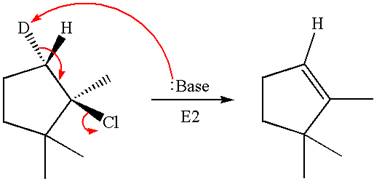
Explanation of Solution
The given reaction equation is
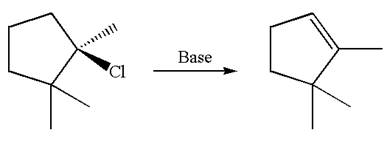
Here, the chlorine atom is the leaving group, which can be eliminated along with either
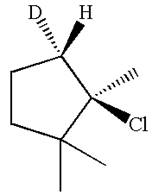
In the given substrate, the leaving group
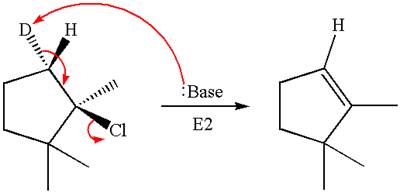
The product formed for the given reaction from
(b)
Interpretation:
The detailed mechanism for the given reaction occurring via
Concept introduction:
The deuterium
Answer to Problem 8.64P
The
Elimination of
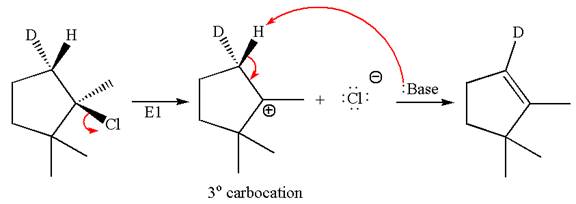
Elimination of
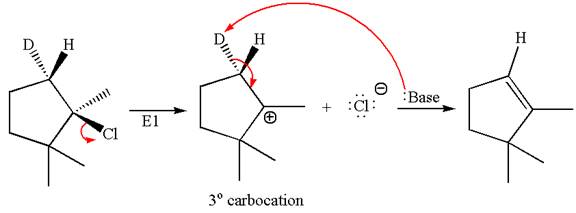
Explanation of Solution
The given reaction equation is
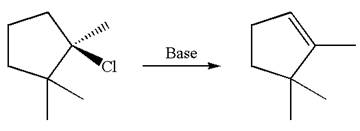
Here, the chlorine atom is the leaving group, which can be eliminated along with either
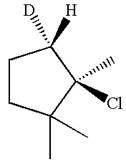
According to
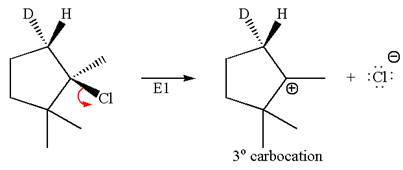
In the second step, both
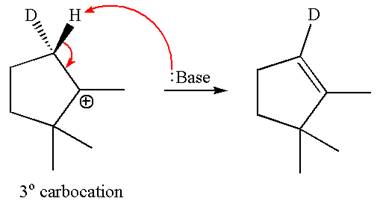
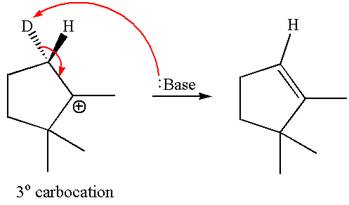
The product formed for the given reaction from
(c)
Interpretation:
The molar mass of each product from
Concept introduction:
The molar mass is the sum of the
The
Answer to Problem 8.64P
The molar masses of the products formed by
Explanation of Solution
The given reaction equation is

Here, the chlorine atom is the leaving group, which can be eliminated along with either
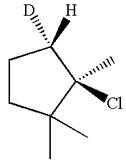
In the given substrate, the leaving group
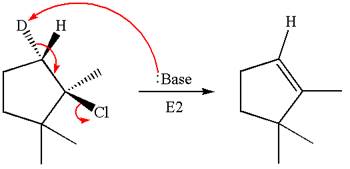
The molecular formula for this product is
According to
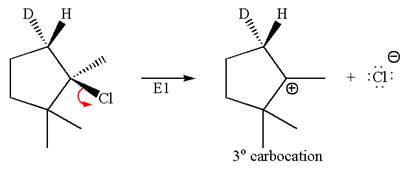
In the second step, both
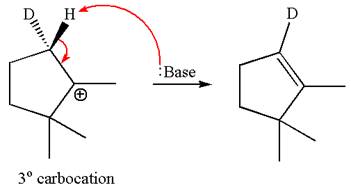
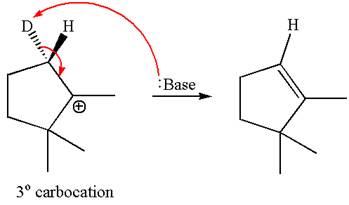
The molecular formulae for both the products formed by
Hence the molar mass of the product
The molar masses of each product formed by
Want to see more full solutions like this?
Chapter 8 Solutions
Organic Chemistry: Principles And Mechanisms (second Edition)
- help 20arrow_forwardProvide the drawing of the unknown structure that corresponds with this data.arrow_forward20.44 The Diels-Alder reaction is not limited to making six-membered rings with only car- bon atoms. Predict the products of the following reactions that produce rings with atoms other than carbon in them. OCCH OCCH H (b) CH C(CH₂)s COOCH མ་ནས་བ (c) N=C H -0.X- (e) H C=N COOCHS + CH2=CHCH₂ →→arrow_forward
- 3) Draw a detailed mechanism and predict the product of the reaction shown? 1) EtMgBr 2) H3O+arrow_forwardHow to draw the mechanism for this reaction?arrow_forward> H₂C=C-CH2-CH3 B. H₂O Pt C. + H2 + H₂O H D. 16. Give the IUPAC name for each of the following: B. Cl Cl c. Cl Cl 17. Draw the line-angle formula for each of the following compounds: 1. phenol 2. 1,3-dichlorobenzene 3. 4-ethyltoluene < Previous Submit Assignment Next ▸arrow_forward
 Organic Chemistry: A Guided InquiryChemistryISBN:9780618974122Author:Andrei StraumanisPublisher:Cengage Learning
Organic Chemistry: A Guided InquiryChemistryISBN:9780618974122Author:Andrei StraumanisPublisher:Cengage Learning
